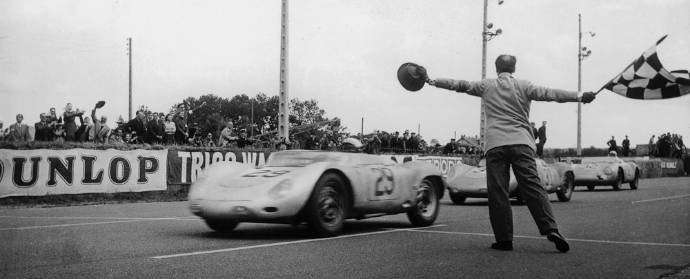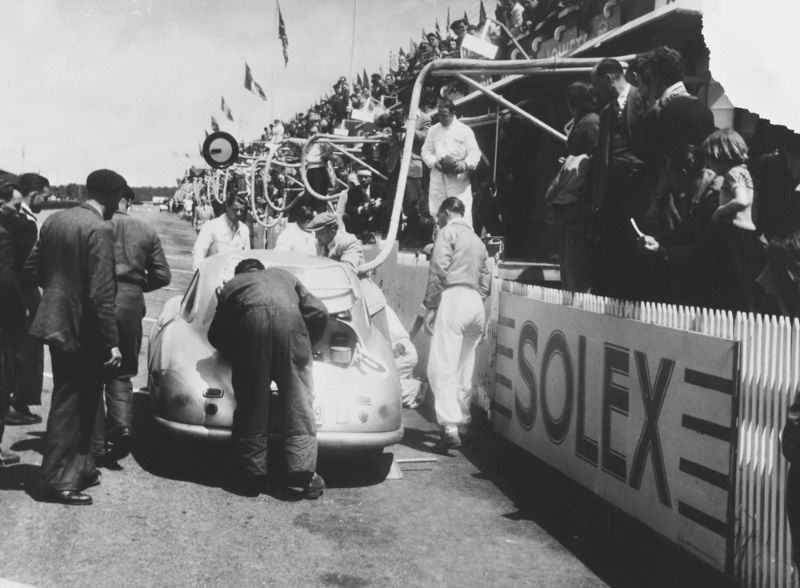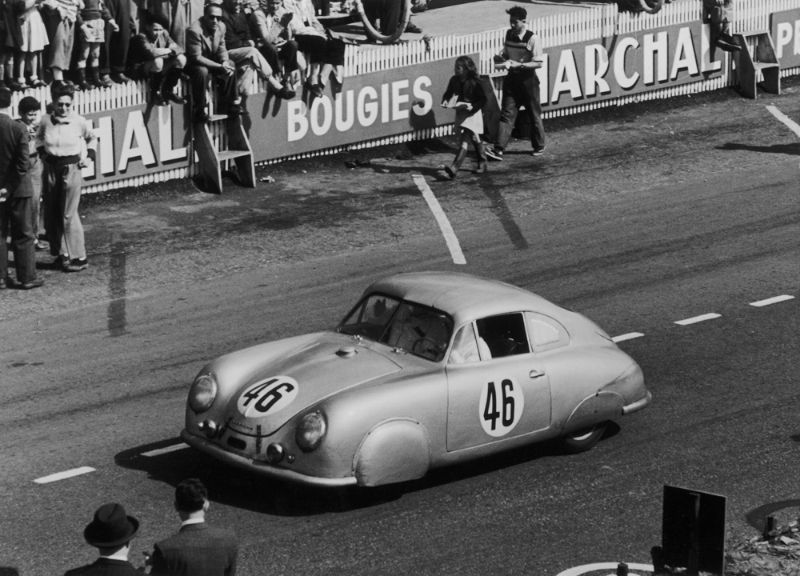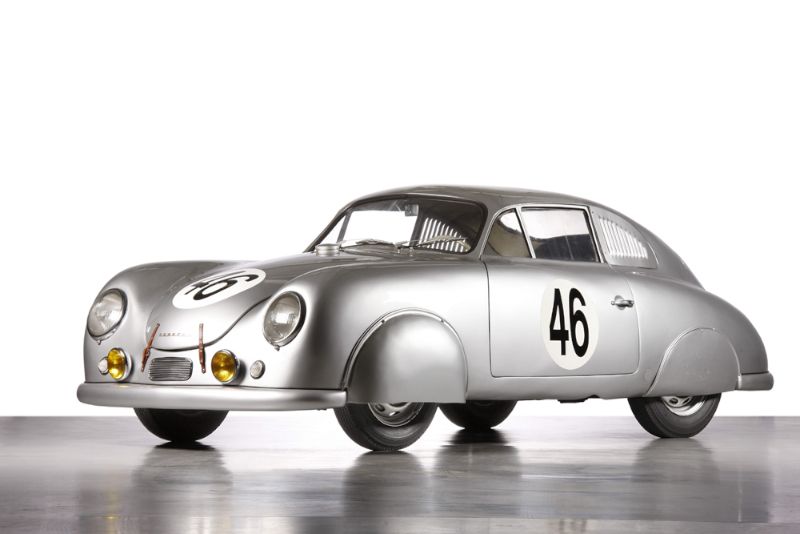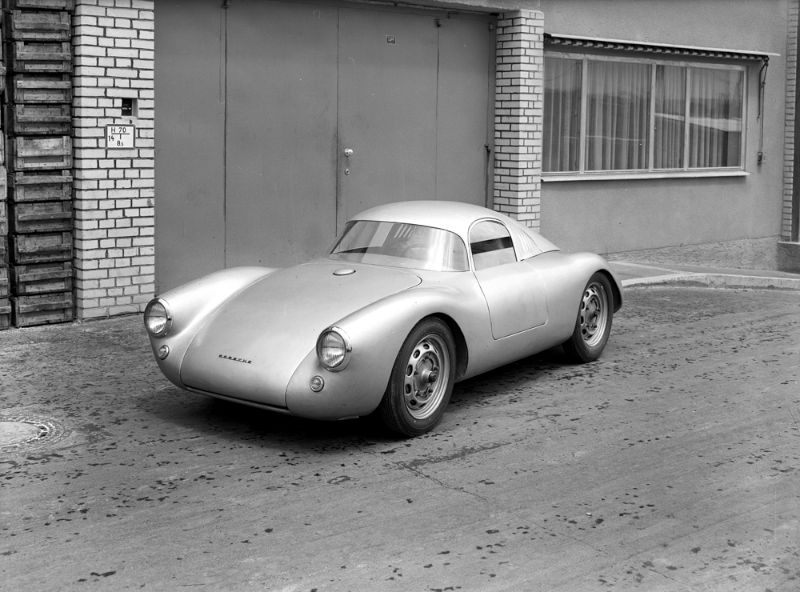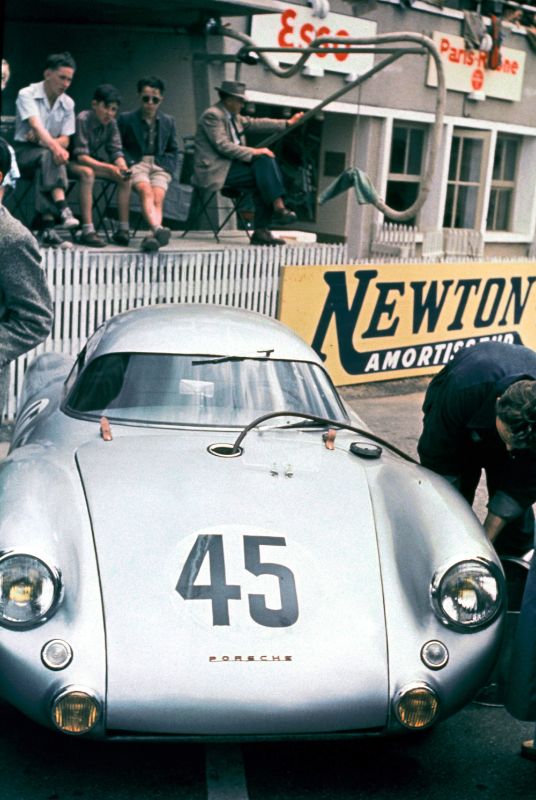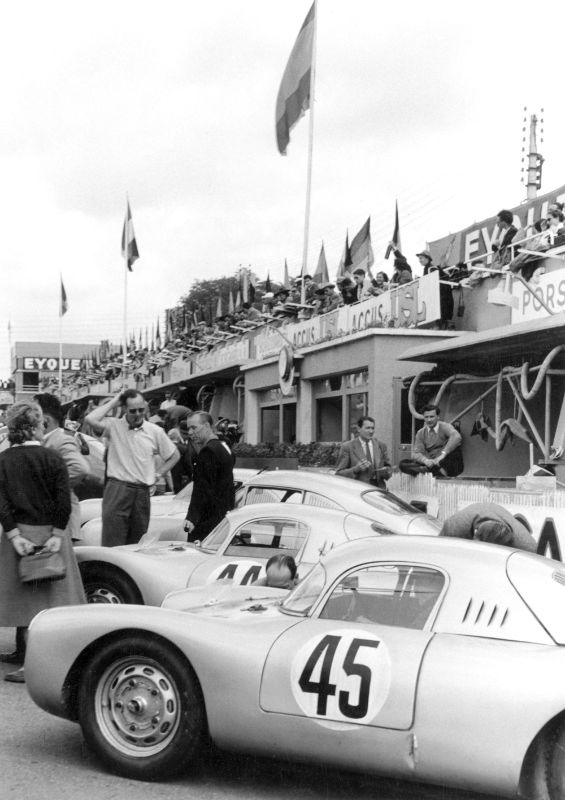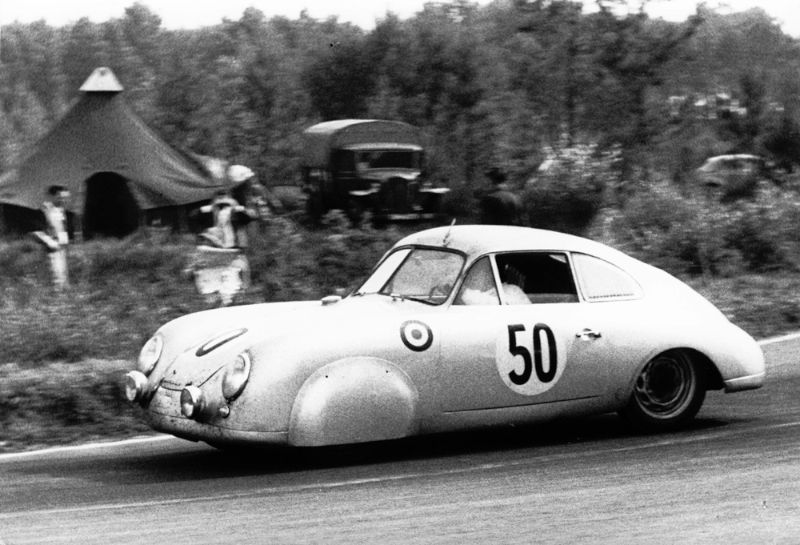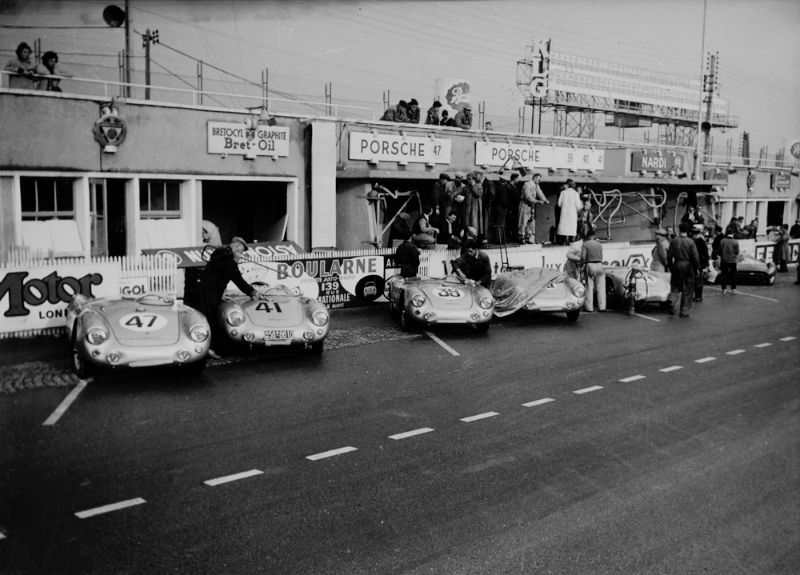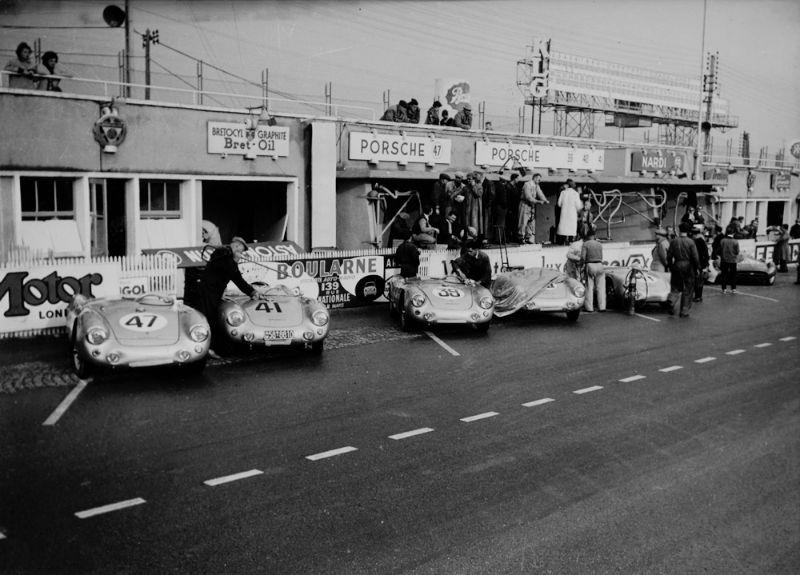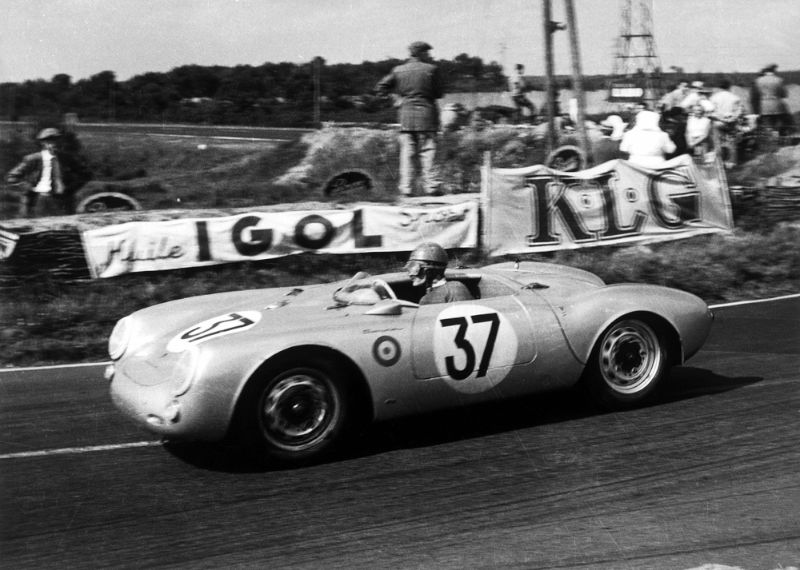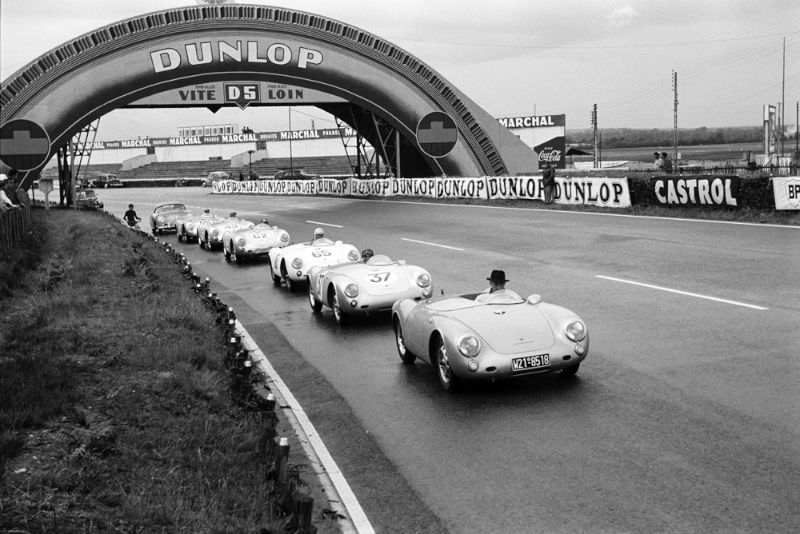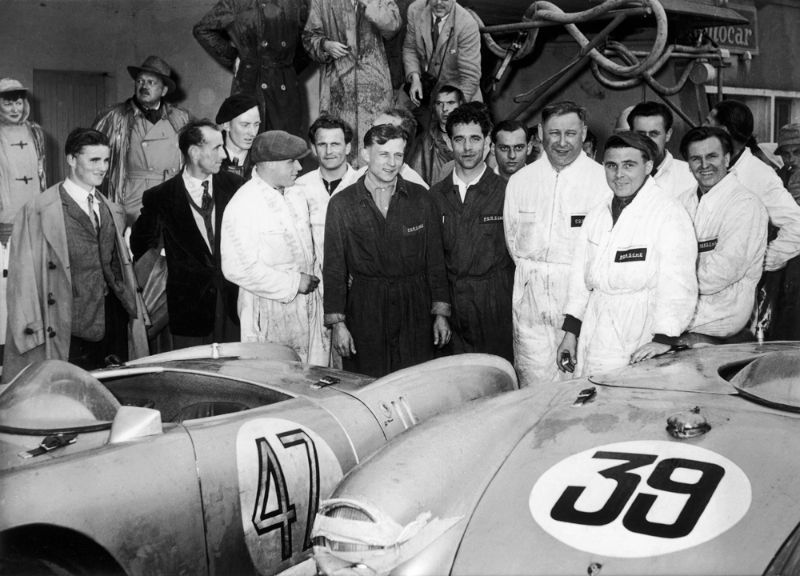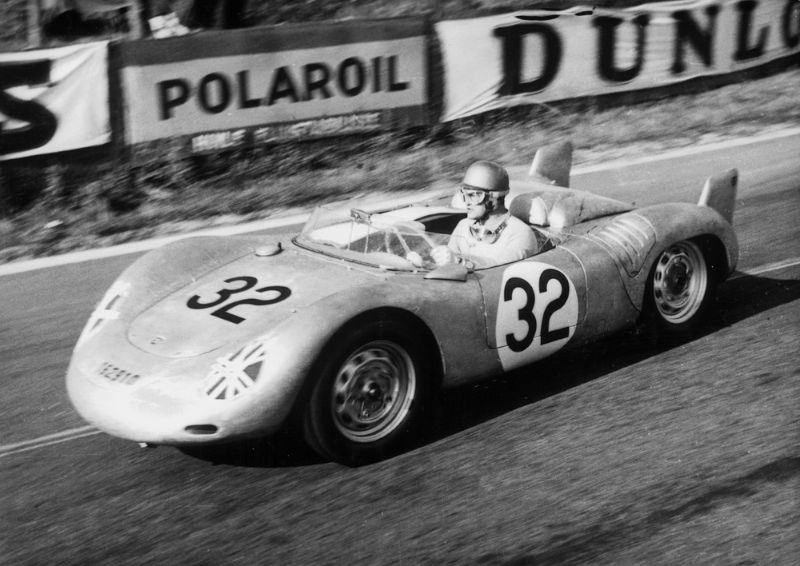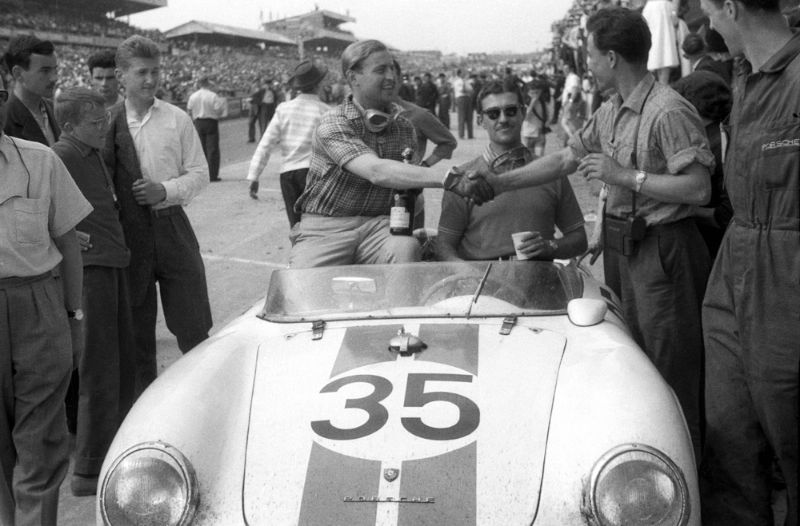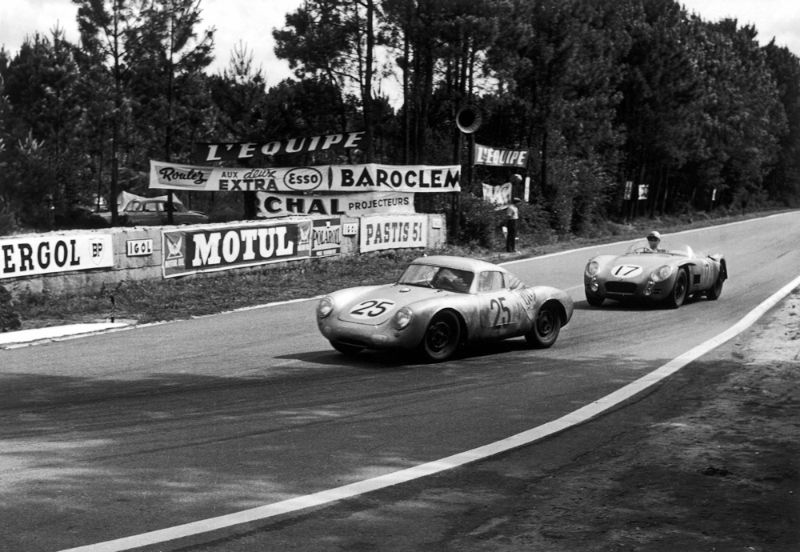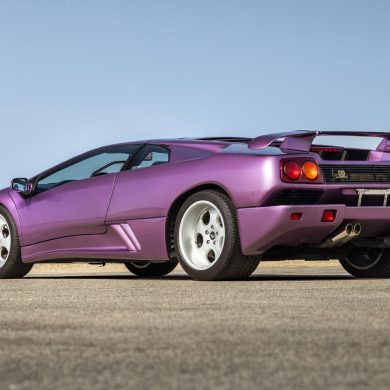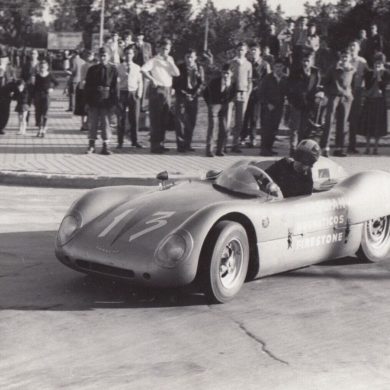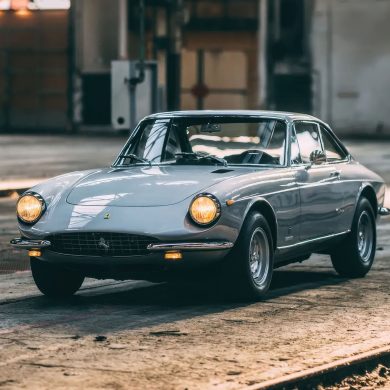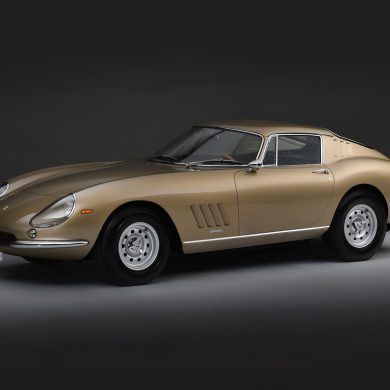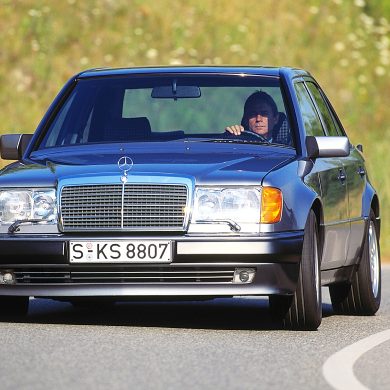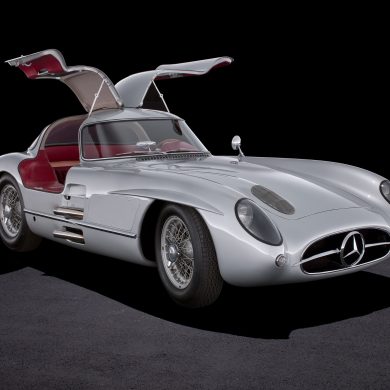In June of 2014, Porsche will return to Le Mans with a newly designed LMP1 racing machine. With 16 overall victories at the 24 Hours of Le Mans, the pinnacle of endurance motor racing, Porsche is the most successful manufacturer in the race’s 90 year history. Their last win, though, was back in 1998 with the 911 GT1, so Porsche has labeled this endeavor as “Our Return” and “Coming Home”. With so much heritage behind it, Porsche’s new LMP1 program is most certainly history in the making.
Over the coming months, Sports Car Digest will run a series of photo retrospectives drawn from Porsche’s Le Mans archive. The first installment looks at Porsche’s early successes at Le Mans during the 1950s.
At the third running of the Le Mans 24 Hours after the war in 1951, Porsche was the first and only German manufacturer to compete. In the autumn of 1950, Charles Faroux, one of the ‘inventors’ and the current race director of the Grand Prix d’Endurance les 24 Heures du Mans, teamed up with the French Porsche importer Auguste Veuillet to convince Professor Ferdinand Porsche of the idea to field his sports cars in 1951 on the high-speed circuit in the Department Sarthe. The small race squad of Porsche KG leased a workshop not far from the circuit in the town of Teloché, where for decades Porsche prepared the race cars and in the village’s Café du Sport celebrated their victories – and digested the odd defeat.
For the race on the circuit 220 kilometres west of Paris, Porsche fielded the 356 SL (Sport Light) “Gmünd-Coupe” with its streamlined aluminum body and covered wheels, lovingly nicknamed the “aluminum can” by the mechanics. With its 1,086 cc four-cylinder boxer engine delivering 46 hp (34 kW), the coupe achieved an impressive 160 km/h top speed. Already at this point, the basic idea of Porsche’s technical philosophy was apparent: systematic lightweight design and a sophisticated aerodynamics were at least as important as a healthy engine performance.
The premiere was a resounding success: Veuillet and his friend Edmond Mouche won the class 751 to 1100 cc and received the flag as 20th overall. Their Porsche covered a distance of 2,840.65 kilometres without a single technical problem, averaging 118.36 km/h. Class victory secured a grid spot for the following year. And the success was not just a lucky break: seven subsequent class wins would follow.
Porsche returned in 1952 with three 356 SL Coupes. The newly-appointed Head of Press and Motorsport, Huschke von Hanstein, shared the cockpit of one of the rear-engined sports car with Petermax Müller, but had to throw in the towel after six hours with gearbox failure. Up until this point, the starting number 51 silver coupe had been running 25th in the overall classification. Equally bad luck also hampered the first customer team. Frenchman Auguste Lachaize entered his own 356 SL and was doing well in the race with teammate Eugène Martin – until their disqualification on Sunday morning because they refueled with the engine running. Veuillet and Mouche saved the day: They won their class in the 356 SL with the starting number 50 and set a new distance record: the pair completed 2,955.410 kilometres with an average speed of 123.14 km/h.
The Porsche squad returned in 1953 with the 550 1500 S Spyder prototype featuring a coupe hardtop. This first factory-run, thoroughbred race car was – at 3.60 meters long, 1.55 meters wide and just on one meter in height – even more compact than the 356 SL and weighed in at just 540 kilograms – that is almost one hundred kilos less than the aluminum coupes. The location of the engine in front of the rear axle was ground-breaking: the small Porsche was the only rear-mid-engined racer in the field. With the actual power plant, this year the team lived with a compromise. The 1,488 cc four-cylinder, VW-based, pushrod engine delivered around 83 hp (61 kW). But in Germany, the trendsetting four-cam Carrera engine by Dr. Ernst Fuhrmann (type 547) was already on the test bench.
Porsche put the Spyder with the starting number 44 in the capable hands of Helm Glöckler and the 25-year-old youngster Hans Herrmann. At the wheel of the number 45 vehicle sat the journalist, motorbike racer and founder of the “Christophorus”, Richard von Frankenberg, as well as the Belgian journalist and race driver Paul Frère. The two lightweight Porsche left the opposition in the dust, overtaking more powerful race cars in other classes, nailing a new distance record of 3,332 kilometres and, thanks to their massive advantage, even managed to stage the perfect photo finish between the two. Frère/von Frankenberg narrowly won their class to 1500 cc with an average of 138.8 km/h ahead of their teammates Herrmann and Glöckler.
The year 1954 heralded the gripping and ultimately successful debut of the four-cam “Fuhrmann” engine in Le Mans. Belgium’s Johnny Claes and Pierre Stasse won the class to 1,500 cc with the 110 hp (81 kW) four-cylinder unit, after Richard von Frankenberg/ Helm Glöckler and Hans Herrmann/Helmut Polensky were forced to retire with overheated piston tops. A Porsche also won the class to 1.1 liters: It was the 550 Spyder driven by Frenchman Gustave Olivier and his American teammate Zora Arkus-Duntov. The latter, incidentally, will go home, turn General Motors around, and make the Corvette into an American legend. All 550 Spyder entries were under Porsche KG.
For the first time, Porsche drivers occupied all three steps of the (class) podium in 1955, after Richard von Frankenberg/Helmut Polensky in the works-550 Spyder, Wolfgang Seidel/Olivier Gendebien and Helm Glöckler/Jaroslav Juhan in this order scored the first three places in the class to 1,500 cc. In the class up to 1.1 litres, the Porsche 550 Spyder also proved unbeatable: Double victory for Zora Arkus-Duntov/Auguste Veuillet ahead of Gustave Olivier and Josef Jeser. The success, however, was overshadowed by the horrific accident of a Mercedes-Benz 300 SLR in which many spectators lost their lives.
The year 1956 marked the Le Mans debut of the 550 A, which had sensationally clinched overall victory at the Targa Florio on 10 June with solo driver Maglioli at the wheel. With the 550 A, Porsche had taken a major technological leap forward. The tubular space frame replaced the flat frame of the predecessor and made the vehicle considerably stiffer. The weight was reduced by 40 kgs to around 550 kilograms. The 1.5-litre Fuhrmann engine delivered 135 hp (99 KW), with the suspension having undergone a complete update. With their commanding victory in the class up to 1.5 liters and fifth overall, Wolfgang Graf Berghe von Trips and Richard von Frankenberg underlined that the compact 550 A was not just a winner on the winding mountain roads of Sicily, but also on a high-speed circuit. Umberto Maglioli and Hans Herrmann parked their 550 A after 136 laps with engine failure.
In the year 1957 a customer team joined the winners’ list for the first time. Ed Hugus and Carel Godin Graf de Beaufort clinched a class win with their 550 A, and came eighth overall. Race driver Claude Storez demonstrates incredible stamina and determination when his factory-550 A rolled to a standstill with an empty fuel tank. For an hour, Storez pushed the car back to the pits and ultimately saw the flag in seventh, only to be disqualified. The first outing of the new 718 1500 RSK with Umberto Maglioli and Edgar Barth at the wheel ended dramatically. In the night, Tony Brooks crashed with his Aston Martin and was flung from the car. Maglioli saw the Briton lying on the track, swerved and crashed into the barriers. The Italian then ran over the track and carried the unconscious Brooks to the edge of the track to safety.
A triumphant year for Porsche: in 1958 the little team achieved the first podium result against strong opposition from major manufacturers in the overall classification. The 718 RSK exceeded all expectations at just its second outing in Le Mans. Jean Behra and Hans Herrmann shared driving duties at the wheel of the number 29 Porsche. This 718 RSK was powered by a 1,587 cc rebored Fuhrmann engine with around 150 hp (110 kW). Accordingly, the vehicle contested the class up to two liters. Edgar Barth/Paul Frère as well as Richard von Frankenberg/Claude Storez competed with 1.5-litre power units. Two privately-run 550 A completed the fleet of Stuttgart racers, consisting exclusively of open Spyders. The race was held under catastrophic weather conditions. During the night, Frère even put in an extra pit stop because he was completely soaked and hypothermic. The Porsche were incredibly quick and even put the three-litre vehicles from Ferrari, Jaguar and Aston Martin under pressure. After 24 hours, the glory is theirs: Behra/Herrmann brought their Porsche home in third place overall followed by Barth/Frère in fourth. This also yielded them class victory for 2.0 and 1.5-litre race cars. Netting the team prize rounds off a perfect weekend.
After clinching third overall in Sebring and outright victory at the Targa Florio with the 718 RSK, the Porsche works squad traveled to Le Mans in 1959 feeling confident. But after eight straight class wins they experienced the taste of defeat. The new “sprint” camshafts lacked the necessary durability. All five race cars retired. The one privateer RS 550 A threw in the towel when the clutch failed on Sunday morning.
[Source: Porsche AG]


